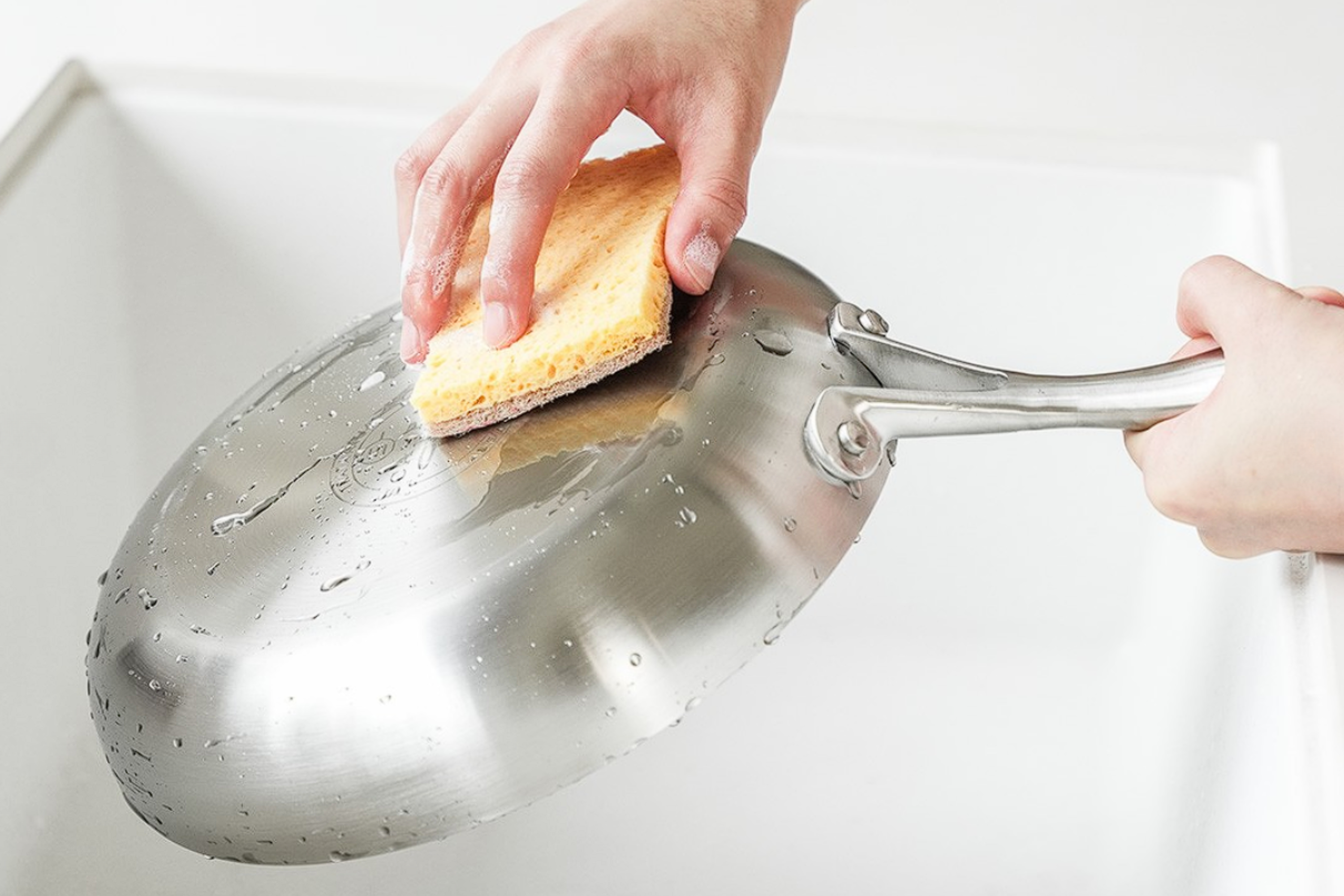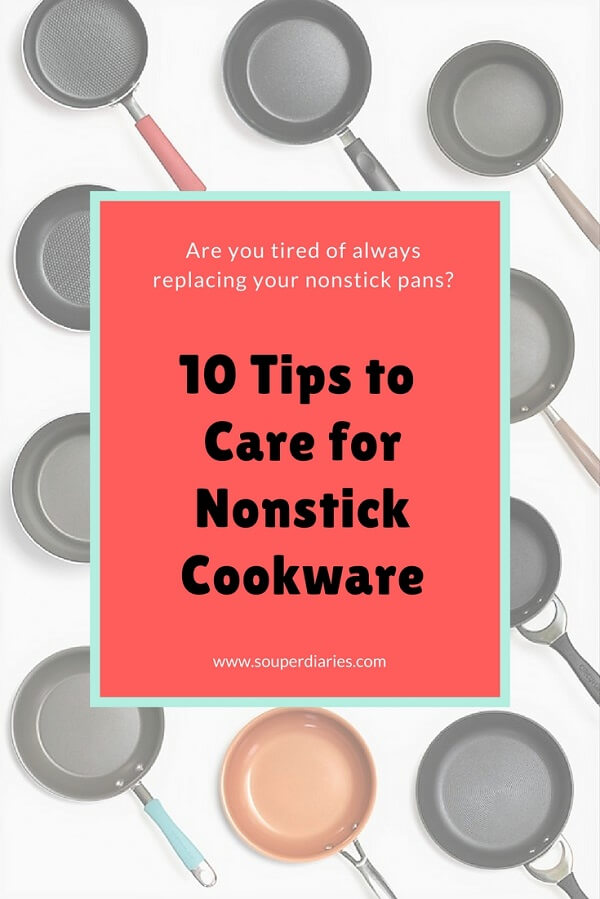Non-Stick Cookware Care Tips will guide you on the best practices for cleaning, cooking, and storing your pans.
But to keep it in top shape, you need to care for it properly. Non-stick cookware can lose its non-stick coating if not handled correctly. This not only affects your cooking but can also pose health risks. Proper care ensures your pans last longer and perform better.
We’ll share simple, effective tips to maintain your non-stick cookware. These tips will help you avoid common mistakes and extend the life of your pans. Let’s dive into how you can keep your non-stick cookware in the best condition with minimal effort.

Credit: www.scanpan.com
Choosing The Right Cookware
Non-stick cookware comes in many materials. Aluminum is light and heats up fast. Stainless steel is strong and lasts long. Ceramic coatings are smooth and easy to clean. Choose the one that fits your cooking style.
Good cookware can be a bit costly. Investing in quality means your pans last longer. Cheap pans may wear out fast. A good pan keeps its non-stick surface longer. Spend a little more now to save later.
Pre-use Preparation
Always wash your new non-stick pan before first use. Use warm, soapy water and a soft sponge. This removes any dust or residue from the factory. Rinse well and dry with a clean towel. Your pan is now ready for seasoning.
Season your pan to protect the non-stick coating. First, add a small amount of vegetable oil to the pan. Spread it evenly with a paper towel. Heat the pan on low for a few minutes. Let it cool and wipe off any excess oil. This helps keep the non-stick surface smooth.
Proper Cooking Techniques
Non-stick cookware works best at medium or low heat. High heat can damage the coating. This damage makes food stick and ruins the pan. Use lower heat for longer cooking times. It protects the non-stick surface and keeps food from burning.
Use wooden, silicone, or plastic utensils. Metal utensils scratch the non-stick surface. Scratches make the pan less effective. They also cause food to stick. Gentle utensils help maintain the coating. This keeps your pan in good shape for longer.
Cleaning Your Cookware
Proper care for non-stick cookware ensures longevity. Use soft sponges and avoid metal utensils to prevent scratches. Store them carefully to maintain their non-stick properties.
Hand Washing Tips
Always allow your cookware to cool before washing. Hot pans can warp when put in cold water. Use a soft sponge with mild dish soap. Never use steel wool or abrasive pads. These can scratch the surface. Clean both inside and outside of the pan. Dry cookware with a soft cloth. This prevents water spots.
Avoiding The Dishwasher
Dishwashers can damage non-stick surfaces. High heat and harsh detergents are harmful. Hand washing is always safer. It helps your cookware last longer. Even if the label says dishwasher safe, it’s better to wash by hand.
Storing Non-stick Pans
Stacking non-stick pans can save space. But, it can also cause damage. Always place a soft cloth between each pan. This prevents scratches. Avoid direct contact between the pans. Use a pan protector if available. These are soft and cushion the pans. They keep the non-stick coating safe.
Pan protectors are very useful. They keep your pans in good shape. They are made of soft material. Simply place them between each pan. This stops the pans from rubbing. Protectors can be found at most stores. They are inexpensive and easy to use. Keep your non-stick pans safe with protectors.
Handling And Maintenance
Do not use metal utensils on non-stick cookware. Wooden or silicone tools are best. Never cut food directly on the cookware. Avoid stacking pots and pans without protection. Use paper towels or cloth between them. Clean with soft sponges. Harsh scrubbers can cause scratches.
Check your cookware often. Look for signs of wear. Tiny scratches can grow. Replace damaged pans quickly. Inspect handles too. Loose handles can be dangerous. Tighten them if needed. Check bottoms for warping. Warped pans do not heat evenly. This can cause burning.
Common Mistakes To Avoid
Metal utensils can damage the non-stick surface. Scratches may occur if you use forks or knives. Non-stick pans need gentle care. Choose wooden or silicone spatulas. These materials are kinder to the surface. They help the pan last longer.
High heat can harm the non-stick coating. Keep the heat low to medium. This prevents damage. Overheating can also release harmful fumes. Use low heat for cooking eggs or pancakes. Medium heat is good for most foods. Your pan will thank you.

Credit: www.facebook.com
Signs Of Wear And Tear
Non-stick cookware doesn’t last forever. Look for scratches and peeling. These signs mean it’s time to replace. If food sticks to the pan, it’s another sign. Warping is also bad. The pan won’t heat evenly. Replace it if the coating is flaking. Using damaged pans can be unsafe.
Damage is easy to spot. Check for discoloration. This shows the coating is wearing out. Chipping is also a sign. Don’t use chipped cookware. It can mix with your food. Look at the handle. If it’s loose, it’s not safe. Tighten or replace the handle if needed. Avoid using metal utensils. They cause scratches. Use wooden or plastic utensils instead.

Credit: souperdiaries.com
Frequently Asked Questions
How To Clean Non-stick Cookware?
Clean non-stick cookware with warm, soapy water and a soft sponge. Avoid abrasive pads or brushes. Rinse thoroughly and dry completely. This helps maintain the non-stick surface and prolong its lifespan.
Can I Use Metal Utensils On Non-stick Pans?
No, avoid using metal utensils on non-stick pans. They can scratch and damage the non-stick coating. Instead, use wooden, silicone, or plastic utensils to keep the surface intact and extend the pan’s life.
What Oil Is Best For Non-stick Pans?
Use oils with high smoke points, like canola or grapeseed oil. Avoid cooking sprays, as they can build up residue on the non-stick surface. Proper oil usage helps maintain the pan’s performance.
Why Is My Non-stick Pan Sticking?
Non-stick pans can stick due to overheating, improper cleaning, or using metal utensils. Ensure you follow care instructions and use appropriate heat levels to maintain the non-stick properties.
Conclusion
Caring for non-stick cookware helps it last longer. Always use gentle utensils. Avoid high heat to keep the coating intact. Clean with soft sponges and mild soap. Store properly to prevent scratches. Follow these simple tips for better cooking results.
Your non-stick pans will thank you. Happy cooking!
